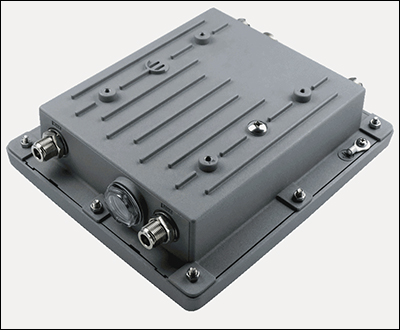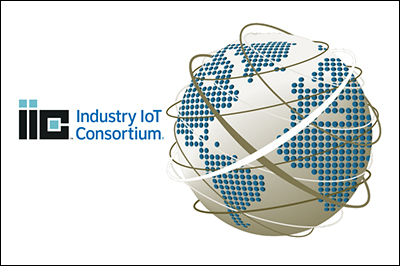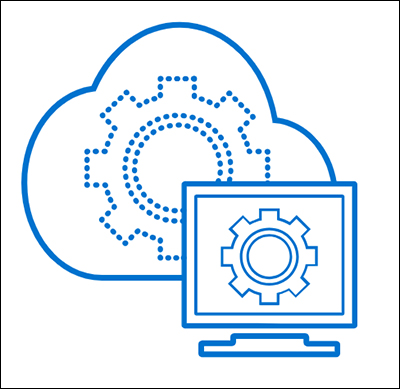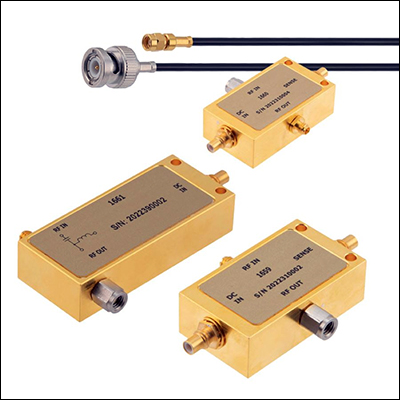Jun 29, 2023Presented here are recent news announcements in the radio frequency identification and Internet of Things industries.
Browan, Actility Collaborate on LoRaWAN Solutions
Browan and Actility have announced the launch of the ThingPark All-in-One (TAO) solution for the Browan Outdoor Deployment Unit. The TAO-Browan gateway incorporates a LoRaWAN network server (LNS), payload decoders and application connectors, and is available on ThingPark Market. The solution is designed to accelerate the implementation and management of LoRaWAN networks across various industry sectors, the partners report, and to facilitate IoT deployments by boosting operational efficiencies and connectivity.
 TAO is an embedded software-management product for the LoRaWAN landscape, intended to provide efficient device battery consumption, and the LNS is maintained by Actility's technical development. The Browan Outdoor Micro Gateway is suitable for small outdoor deployments, the companies report, allowing the connection of battery-operated sensors over long distances in challenging environments.
TAO is an embedded software-management product for the LoRaWAN landscape, intended to provide efficient device battery consumption, and the LNS is maintained by Actility's technical development. The Browan Outdoor Micro Gateway is suitable for small outdoor deployments, the companies report, allowing the connection of battery-operated sensors over long distances in challenging environments.
TAO is built for easy migration to industrial solutions, with no disturbance to existing devices. A smooth transition to other gateways allows secure data export and backup capabilities, and the system can be integrated into a centralized LoRaWAN gateway network. With native support for numerous connectors and BACNET, as well as ModBus gateway compatibility, TAO is suitable for small- to medium-scale Industrial Internet of Things (IIoT) applications.
The solution has qualified as an Azure Certified Device and has joined a network of such devices. The TAO-Browan system can be used for industrial asset management and maintenance, energy efficiency in smart buildings, connectivity at remote facilities, and other applications, and it can be deployed at restaurants and isolated facilities. Early adopters include a Japan-based company specializing in industrial automation and control technologies, which has deployed the TAO system for factory trials using vibration sensors on machines.
Industry IoT Consortium Updates Security Framework
The Industry IoT Consortium (IIC) has published updates to its "Industry Internet of Things Security Framework" (IISF), previously titled the "Industrial Internet Security Framework." This foundational document creates a broad industry consensus on securing IIoT systems at a time when cyberattacks on industrial-control systems are on the rise. Ransomware attacks have caused billions of dollars in damage, IIC reports, impacting such major industrial companies as Colonial Pipeline, Mondelez, Maersk and FedEx.
 "IIoT systems interact with actuators in the physical world where Internet security concerns can lead to loss of life or damage to systems," said Chuck Byers, the Industry IoT Consortium's CTO, in a prepared statement. "This potential risk increases the importance of security, safety, reliability, privacy and resiliency beyond the levels expected in many traditional IT environments, and this document includes important best practices and architecture insights to help construct trustworthy IIoT systems."
"IIoT systems interact with actuators in the physical world where Internet security concerns can lead to loss of life or damage to systems," said Chuck Byers, the Industry IoT Consortium's CTO, in a prepared statement. "This potential risk increases the importance of security, safety, reliability, privacy and resiliency beyond the levels expected in many traditional IT environments, and this document includes important best practices and architecture insights to help construct trustworthy IIoT systems."
"The IIoT includes many participants from the energy, healthcare, manufacturing, transportation, and public sectors, each of which must consider security," added Keao Caindec, Farallon Technology Group's CEO and a co-chair of the IIC Security and Trust Working Group, in the statement. "This update to the IISF represents a collaboration and consensus among the IIC members who share an interest in protecting SCADA/ICS systems that are critical to industrial digital transformation."
The revised IISF is intended to help organizations modernize IIoT security systems and approaches. It includes trustworthiness content based on the IIC Industrial IoT Trustworthiness Framework Foundations; an explanation of the IIC IoT Security Maturity Model to help organizations improve confidence in their security systems and processes; guidance on endpoint protection, including information on hardware-based security, key and certificate management, and secure boot; guidance on securing wireless communications; an expansion of the considerations and guidance for security and configuration management of IT and OT security systems; and considerations for securing IIoT systems.
"As we have seen with recent attacks such as SolarWinds and MoveIT, Federal and industrial systems are vulnerable to supply chain attacks," said Bob Martin, senior principal engineer of the MITRE Corporation and a co-chair of the IIC Security and Trust Working Group, in the prepared statement. "The IISF provides a broad perspective of the many ways in which organizations can build more trustworthy systems."
ScaleOut Software Adds Google Cloud Support
ScaleOut Software has announced that its product suite now includes Google Cloud support. Applications running in Google Cloud can use ScaleOut's distributed cache and in-memory computing platform to scale their performance and run data-parallel analysis on dynamic business data. The ScaleOut Product Suite is a collection of software products, including In-Memory Database, StateServer, GeoServer, Digital Twin Streaming Service, StreamServer and more. This integration provides multi-cloud capabilities.
 "We are excited to add Google Cloud Platform support for hosting the ScaleOut Product Suite," said William Bain, ScaleOut Software's CEO, in a prepared statement. "This support further broadens the public cloud options available to our customers for hosting our industry-leading distributed cache and in-memory analytics. Google's impressive performance enables our distributed cache to deliver the full benefits of automatic throughput scaling to applications."
"We are excited to add Google Cloud Platform support for hosting the ScaleOut Product Suite," said William Bain, ScaleOut Software's CEO, in a prepared statement. "This support further broadens the public cloud options available to our customers for hosting our industry-leading distributed cache and in-memory analytics. Google's impressive performance enables our distributed cache to deliver the full benefits of automatic throughput scaling to applications."
The ScaleOut Management Console enables users to deploy a distributed cache to Google Cloud using a step-by-step wizard, and to then track its status. Distributed caches comprising one or more virtual servers automatically create a single compute cluster to serve client requests with scalability. Client applications running either within Google Cloud or from remote sites can automatically connect to all caching servers within a cluster by specifying the cluster's name. Using the management console, users can add or remove virtual servers from a distributed cache to meet application workload needs.
Users can implement auto-scaling policies based on performance measures, such as memory usage. Distributed caches, such as the ScaleOut Product Suite, allow applications to store fast-changing data, such as e-commerce shopping carts, stock prices and streaming telemetry, in memory with low latency for rapid access and analysis. Built using a cluster of virtual or physical servers, these caches automatically scale access throughput and analytics to handle large workloads, according to ScaleOut Software. In addition, the company reports, they provide built-in high availability for uninterrupted access if a server fails.
Nexite Expands Its Connected Retail Platform
Nexite, which provides a data platform for real-time in-store intelligence and retail shopping, has announced updates to its Connected Retail Platform. This includes improved software and hardware, upgrades to its Connected Merchandise system, expanded features in Connected Operations, and new offerings in Connected Stores.
 Nexite's new technologies include secure Mobile 'Scan & Go' Self-Checkout, enabling retailers to implement secure mobile self-checkout into their branded apps. Frontline Staff Task Management automates store inventory and stock-management tasks, offering live store heat maps with real-time product finding. Real-time anti-theft capability measures for loss prevention, with 2.0 overhead readers with enhanced angle of arrival technology for location tracking accuracy, as well as EAS-antitheft functionality.
Nexite's new technologies include secure Mobile 'Scan & Go' Self-Checkout, enabling retailers to implement secure mobile self-checkout into their branded apps. Frontline Staff Task Management automates store inventory and stock-management tasks, offering live store heat maps with real-time product finding. Real-time anti-theft capability measures for loss prevention, with 2.0 overhead readers with enhanced angle of arrival technology for location tracking accuracy, as well as EAS-antitheft functionality.
These features, according to the company, are designed for mobile self-checkout, allowing customers to skip checkout lines. Retailers can obtain real-time visibility into stock counts at the item level; improve store efficiency, inventory management and localization; and better understand how customers interact with merchandise at the local store level. The technology also addresses challenges around retail employee retention, by providing store associates with automated tools to eliminate tedious, manual tasks.
"Retailers today have visibility and data in bits and pieces across their channels and operations," said Anat Shakedd, Nexite's CEO and co-founder, in a prepared statement. "With Nexite, retailers have an enterprise-wide picture of what's happening with their merchandise in real time, to increase margins and prevent shrinkage. While RFID has been extremely beneficial to inventory management, we wanted to take it a step further by connecting the retail organization through digitization, data and AI-led solutions for better connection with each other and, most of all, their customers. By better understanding your customers' behavior, you'll be able to remove the friction in the customer experience and see greater profitability due to stronger brand loyalty."
Pasternack Introduces UWB Bias Tees
Infinite Electronics brand Pasternack, a provider of RF, microwave- and millimeter-wave products, has announced the launch of its ultra-wideband (UWB) bias tees for the application of DC and RF signals to electronic devices. The tees, designed to set the DC bias point of electronic components without disturbing their operation, cover a frequency range of 50 kHz to 110 GHz.
 The bias tees come in both male and female W1 RF connector configurations, along with an SMC male DC connector. They are housed in small, rugged aluminum packages that meet the MIL-STD-202F tests for thermal shock, mechanical shock and vibration, the company reports. The tees are designed to ensure efficient DC biasing thanks to the SMC connector, Pasternack indicates, and they offer metrology-grade quality. The mechanical designs, with W1 1-mm connectors, allow for minimal signal interaction and low insertion loss.
The bias tees come in both male and female W1 RF connector configurations, along with an SMC male DC connector. They are housed in small, rugged aluminum packages that meet the MIL-STD-202F tests for thermal shock, mechanical shock and vibration, the company reports. The tees are designed to ensure efficient DC biasing thanks to the SMC connector, Pasternack indicates, and they offer metrology-grade quality. The mechanical designs, with W1 1-mm connectors, allow for minimal signal interaction and low insertion loss.
The UWB bias tees are RoHS-compliant, enabling adherence to the Restriction of Hazardous Substances directive. "Pasternack has delivered a product that combines advanced technology with environmental consciousness," said Kevin Hietpas, the company's product line manager, in a prepared statement. "Our new ultra-wideband bias tees show our commitments to quality, customer service and making a positive impact on the planet." The bias tees are now in stock and are available for same-day shipping.

